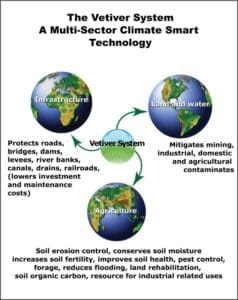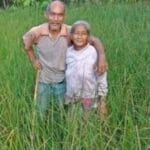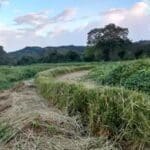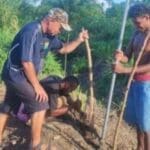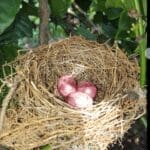The Vetiver Network International (TVNI) promotes the worldwide use of the Vetiver System (VS) for a sustainable environment particularly in relation to land and water. The Network is a global network of individuals, groups, communities, entrepreneurs, and social organizations working together. The “networking” part is all voluntary – no managers and no remuneration! TVNI is an effective non-profit environmental organizations and has impacted tens of thousands of people at all levels of society. The VS provides significant economic, environmental and social benefits. VS is now used in most tropical and semi-tropical countries, north to Italy and south to Chile. Based on research and demonstrations through TVNI “partners,” including research institutions, development agencies, NGO’s and the private sector, VS has expanded from a technology primarily for farm soil and water conservation to include important applications for: infrastructure stabilization and protection; the treatment of contaminated land and water; and other socio-economic uses including as a material resource for handicrafts. At a time of climate change challenge vetiver grass has an important role to play in regenerative agriculture and soil carbon creation.
TVNI history, achievements and time line presentation
Newsletter (NL 2025-04) – Pan American Vetiver conference, field feedback, and more
Pre-Announcement: PanAmerican Vetiver System Conference – Veracruz, Mexico, November 2025 — Building a Sustainable Future for the Americas with the Vetiver System This event will explore the transformative potential of the Vetiver System (VS) in addressing critical sustainability challenges across...
Read moreOTHER USES OF VETIVER GRASS
CONTAMINATED LAND & WATER
VETIVER GRASS - THE PLANT
BUY VETIVER PLANTS - SUPPLIERS
CLIMATE SMART TECHNOLOGY
A Tool for Individuals and Commmunities
Vetiver grass provides a low cost means to adapt to the challenge of climate change – an overview





